Research - (2022) Volume 10, Issue 1
Diagnosing Rotifera in Old Water Tanks and treating it with Chlorine
Bafreen Mohamad Raza* and Faeza Nasir Toama
*Correspondence: Bafreen Mohamad Raza, Department of Biology, College of Science, University of Kirkuk, Iraq, Email:
Abstract
This study was conducted to find out the role of chlorine in the old water tanks of different sites in Kirkuk Governorate, Iraq. The physical and chemical properties of pollutants in drinking water were studied, with 51 samples selected from 5 primary water sites. The following results were obtained: Rotifers were detected in old water tanks only in 7 samples, while the modern ones did not contain rotifers from 51 samples either. We also noted a variation in temperatures that ranged between (13-16.5℃), the turbidity ratio was measured in 5 sites, where the highest percentage was in the first site and the lowest in the third site, and chlorine was used to prove its effectiveness in eliminating the initial stage, as for measuring the degree of the purity of the water, the TDS was measured, as it ranged between (522-237) mg/L, and the highest percentage was in the first site and the lowest in the third site. The study showed a variation in the percentage of chlorine, the degree of turbidity, and the degree of purity as well.
Keywords
Rotifers, Chlorine, Tank water
Introduction
Rotifers are multicellular microscopic animals, males are usually smaller than females, and are distinguished by the presence of a specialized ciliated area at the anterior tip, which is named according to the strokes of those cilia [1,2]. They have the highest proliferation rate compared to all other cells, and can be thickened if food and the right conditions are available [3]. They live in aquatic environments, especially in fresh water, or on benthic organisms or associated with plants, some of them are floating, some are parasitic, and most of them are marine [4]. Rotifers' habitat may include stationary aquatic environments such as lake bottoms, as well as flowing water environments, such as rivers or streams. They are also found in mosses and lichens that grow on tree trunks and rocks, in rain gutters, and in the tanks of sewage treatment plants. It can be said that anywhere has water for days [5,6]. Rotifers are a sensitive indicator of water quality. Water has many benefits that cannot be counted, but on the other hand, water because of its properties qualifies it to be one of the most polluted environmental components [7]. Pollution, which is described as any change in the basic properties or components of the environment, which causes many health problems. It can also be defined as a change in the main components of the environment, either in a natural way, or as a result of unacceptable human intervention for self-interest, and thus a great obstacle has been placed in the way of human aspirations for water suitable for more or less daily uses [8,9]. Turbidity can protect some microorganisms during the disinfection process [10]. Furthermore, when naturally occurring organic matter is abundant in water, it can lead to the formation of disinfection by-products (DBPs) such as organohalogens, primarily trimethane (THM) and some of these potentially hazardous substances. The health risks arising from all these by-products of disinfection are very small compared to the risks associated with inadequate disinfection [11]. Therefore, the importance of the disinfection process should not be underestimated to control disinfection byproducts. Chlorine is one of the most widely used substances for disinfecting drinking water and has an effective effect on bacteria and microscopic organic matter. Disinfection of drinking water with chlorine may be limited to pathogens of protozoa and some viruses [12,13]. It is a greenish-yellow gas at room temperature with a density two and a half times higher than that of air and is packaged into cylinders used in the sterilization process [14].This study aims to assess the adequacy of the quantities of chlorine added in water tanks to ensure the efficiency of sterilization.
Methodology
In this study, samples of water from old reservoirs were taken from 5 sites, each with 51 samples, in Kirkuk Governorate / Iraq, from 1/6/2019 to 1/1/2020, as the main objective of this survey research is to determine the quality of the already consumed water, Thus the samples were from the tank water that you use as drinking water and were taken from the point of consumption. The water temperature for each site was measured directly using a simple graduated mercury thermometer. During the examination, a glass of water was brought which we use. Water samples were examined to see if they contained rotifers or not. During the sample collection period, a Whirl-Pak bag was used to carry the sample for testing elsewhere. When collecting water samples, the pine was opened for 30 seconds before the sample was taken. The sample code was written on Whirl-Pak. We made sure hands were sanitized before opening the Whirl-Pak. The water sample was taken in a Whirl-Pak (volume of 110 ml). Then it was placed in the centrifuge for 3 minutes. After the end the filter was discarded and a drop of sediment was placed on the slide for direct examination under the microscope. Water turbidity was measured using a sake disk, a circular disk used to measure the purity of water. The disc was fixed to a pole or string and slowly lowered into the water. The first depth at which the pattern disappeared on the disc was taken as a measure of the purity (transparency) of the water. This measure is known as sake depth and is related to the turbidity of the water. As a TDS device was used to measure water quality, chlorine was added to drinking water treatment sites. It is necessary to have a maximum of 0.5 mg of chlorine per litre of water. After chlorine was added to the tank to distribute it homogeneously, the tank was left closed for 6 hours and completely disinfected, then all tank valves were opened and the chlorinated water filled with clean water was drained. Excel 2010 was used to display the results in graphical figures.
Results
In Figure 1, chlorine was used to show its effectiveness in eliminating primary, as sterilization is the process used to kill disease-causing microorganisms, and this process is done by using chlorine that disinfects water and kills germs in it. Therefore, many treatment plants resort to adding chlorine in sufficient proportions to obtain residual free chlorine to ensure high quality water purification from the plant. While in Figure 2, rotifers were detected in the old water tanks, where in the old water tanks 51 samples only 7 tanks contained rotifers, while the modern chairs did not contain rotifers from 51 samples as well. As for Figure 3, chlorine was added to sterilize the old tanks. In Figure 4, the turbidity rate was measured in site 5, where the highest percentage was in the first site and the lowest in the third site. Turbidity is caused by the presence of substances which may be soil particles, sand, organic or inorganic matter, clay, or may be microorganisms, as it may be expressed by the visible property that makes light scattered or absorbed. The percentage of dissolved solids was measured and ranged between (522-237) mg/L, the highest percentage was in the first site and the lowest in the third site. In some locations, standards have been exceeded due to deterioration of the type of alum used in the liquefaction and feeding method. As shown in Figure 5.
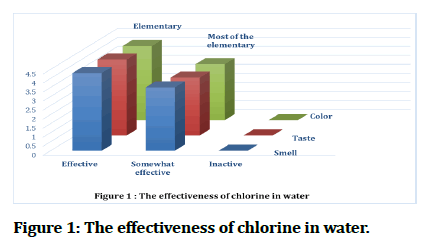
Figure 1: The effectiveness of chlorine in water.
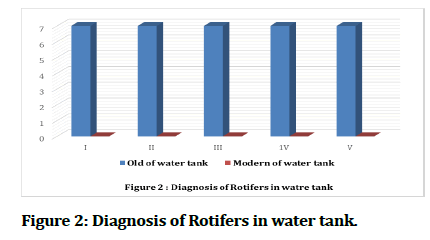
Figure 2:Diagnosis of Rotifers in water tank.
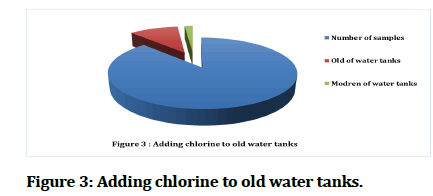
Figure 3:Adding chlorine to old water tanks.
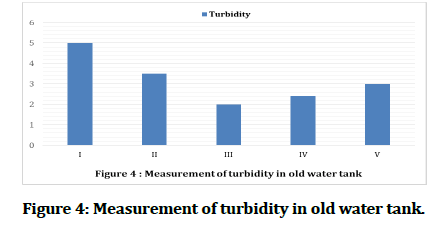
Figure 4:Measurement of turbidity in old water tank.
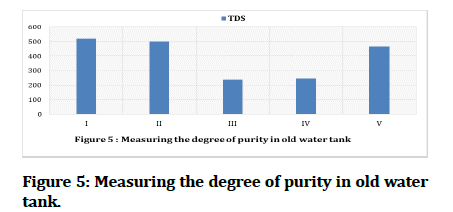
Figure 5:Measuring the degree of purity in old water tank.
Discussion
Through our study, many physical and chemical tests were conducted for the selected drinking water in the Kirkuk regions for the five different sites, and the results of examining the samples showed a temperature variation that ranged between (13-16.5 degrees Celsius), and this discrepancy has a significant role in the growth of microorganisms, as the temperature is one of the most important environmental factors, as the water temperature has a significant impact on the physical, chemical and biological properties of the water surface [15,16]. Affects the dissolution of gases and salts that change the taste and smell of water, it was found that the temperature has an effect on the growth rate and seasonal diversity due to the difference in the temperature of these organisms [17]. Temperature has a clear role in increasing productivity in controlling metabolism and food consumption. Water temperature and dissolved oxygen are the main, but not the only, factors affecting the density of ancient water reservoirs [18]. Rotifer plays an essential role in most freshwater ecosystems through its influence on the food chain. It is found in all freshwater bodies, from large permanent lakes to small ponds, which made its spread, distribution, and density one of capillary and interstitial water [19]. Chlorine has been used to sterilize water intended for various human uses, as it is an oxidizing agent that eliminates microorganisms that have not been removed by sedimentation and filtration processes, as well as its role in its interaction with ammonia and some organic compounds [20]. High levels of turbidity in drinking water pose a risk to human health, especially for diseases of the digestive system. Pollutants such as viruses or bacteria can become shielded or suspended on plankton, and suspended solids interfere with the chlorination process because these particles are shields to protect viruses and bacteria [21-23].
Conclusions
The appearance of rotifers in drinking water leads to potential health problems, despite the effectiveness of chlorine in sterilizing drinking water, so we recommend more tests to detect pathogens that may contaminate drinking water.
References
- Shmakova L, Malavin S, Iakovenko N, et al. A living bdelloid rotifer from 24,000-year-old Arctic permafrost. Curr Biol 2021; 31:R712-3.
- Datki Z, Acs E, Balazs E, et al. Exogenic production of bioactive filamentous biopolymer by monogonant rotifers. Ecotoxicol Environ Saf 2021; 208:111666.
- Venâncio C, Ciubotariu A, Lopes I, et al. Is the toxicity of nanosized polymethylmethacrylate particles dependent on the exposure route and food items?. J Hazard Mater 2021; 413:125443.
- Rebecchi L, Boschetti C, Nelson DR. Extreme-tolerance mechanisms in meiofaunal organisms: a case study with tardigrades, rotifers and nematodes. Hydrobiologia 2020; 847:2779-99.
- Sarkar UK, Mishal P, Borah S, et al. Status, potential, prospects, and issues of floodplain wetland fisheries in India: Synthesis and review for sustainable management. Rev Fish Sci Aquac 2020; 29:1-32.
- Coelho PN, Henry R. Functional groups of microcrustaceans along a horizontal gradient in a Neotropical lake colonized by macrophytes. Aquat Sci 2021; 83:1-3.
- Peña-Guzmán C, Ulloa-Sánchez S, Mora K, et al. Emerging pollutants in the urban water cycle in Latin America: A review of the current literature. J Environ Manage 2019; 237:408-23.
- Ventriglio A, Bellomo A, di Gioia I, et al. Environmental pollution and mental health: A narrative review of literature. CNS Spectr 2021; 26:51-61.
- Saravanan A, Kumar PS, Jeevanantham S, et al. Effective water/wastewater treatment methodologies for toxic pollutants removal: Processes and applications towards sustainable development. Chemosphere 2021; 130595.
- Amirsoleimani A, Brion GM. Solar disinfection of turbid hygiene waters in Lexington, KY, USA. J Water Health 2021.
- Gaspar MA. Policy analysis: Does the WFD works with regard to CEC in aquatic environments? Case study: The Netherlands Doctoral dissertation.
- Alazzawi M, Sasmazel HT. Materials and processes for treatment of microbiological pollution in water. In Water Safety, Security and Sustainability 2021; 291-304.
- Srivastav AL, Patel N, Chaudhary VK. Disinfection by-products in drinking water: Occurrence, toxicity and abatement. Environ Pollut 2020; 115474.
- Gámiz J, Grau A, Martínez H, et al. Automated chlorine dosage in a simulated drinking water treatment plant: A real case study. Appl Sci 2020; 10:4035.
- Yang K, Yu Z, Luo Y. Analysis on driving factors of lake surface water temperature for major lakes in Yunnan-Guizhou Plateau. Water Res 2020; 184:116018.
- Pradhan D, Sukla LB, Sawyer M, et al. Recent bioreduction of hexavalent chromium in wastewater treatment: A review. J Ind Eng Chem 2017; 55:1-20.
- Masakha EJ. Longitudinal and seasonal variations in physicochemical and microbiological properties of water quality of Sosiani River, Uasin Gishu County, Kenya (Doctoral dissertation, Egerton University).
- Dauda AB. Biofloc technology: A review on the microbial interactions, operational parameters and implications to disease and health management of cultured aquatic animals. Rev Aqua 2020; 12:1193-210.
- Ahmed MM, Ibrahim A. Microbiological and immunological studies on brucellosis in a hospital in al-madinah al-munawarah. J Sci Res Medi Biolo Sci 2020; 1:24-44.
- Malekzadeh-Viayeh R. Rotifer diversity in Iranian waters: A review. Environment Headwaters Mouth 2021; 705-41.
- Ioannidis K, Batty C, Turner C, et al. A laboratory study to assess the formation of effluent volatile compounds and disinfection by‐products during chemomechanical preparation of infected root canals and application of activated carbon for their removal. Int Endod J 2021; 54:601-15.
- Raimi M, Nimisngha D, Odipe OE, et al. Health risk assessment on heavy metals ingestion through groundwater drinking pathway for residents in an oil and gas producing area of Rivers State, Nigeria. OPEN J Yangtze Oil Gas 2018; 3:191-206.
- Al-Nihmi FM, Salih AA, Qazzan J. Detection of pathogenic waterborne parasites in treated wastewater of Rada'a City-Yemen. J Sci Res Med Biol Sci 2020; 1:30-139.
Indexed at, Google Scholar, Cross Ref
Indexed at, Google Scholar, Cross Ref
Indexed at, Google Scholar, Cross Ref
Indexed at, Google Scholar, Cross Ref
Indexed at, Google Scholar, Cross Ref
Indexed at, Google Scholar, Cross Ref
Indexed at, Google Scholar, Cross Ref
Indexed at, Google Scholar, Cross Ref
Indexed at, Google Scholar, Cross Ref
Indexed at, Google Scholar, Cross Ref
Indexed at, Google Scholar, Cross Ref
Indexed at, Google Scholar, Cross Ref
Indexed at, Google Scholar, Cross Ref
Indexed at, Google Scholar, Cross Ref
Author Info
Bafreen Mohamad Raza* and Faeza Nasir Toama
Department of Biology, College of Science, University of Kirkuk, IraqCitation: Bafreen Mohamad Raza, Faeza Nasir Toama,Diagnosing Rotifera in Old Water Tanks and treating it with Chlorine, J Res Med Dent Sci, 2022, 10(1): 386-389
Received: 10-Dec-2021, Manuscript No. Jrmds-21-47157; , Pre QC No. Jrmds-21-47157 (PQ); Editor assigned: 13-Dec-2021, Pre QC No. Jrmds-21-47157 (PQ); Reviewed: 27-Dec-2021, QC No. Jrmds-21-47157; Revised: 30-Dec-2021, Manuscript No. Jrmds-21-47157 (R); Published: 06-Jan-2022
